THREEWOOD
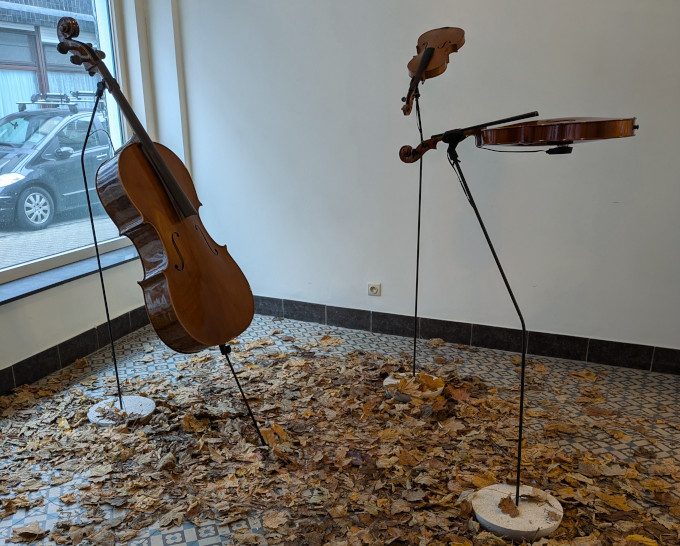
Concept, recordings & realization: Hans Roels
Design of the instrument stands: Marijn Dionys
Text & documentation: Hans Roels & Kristof Lauwers (video, foto)
Description and Concept
In Threewood (working title) a violin, viola and cello -a string trio- function as loudspeakers via a transducer on the sound box. The instruments play recordings of (the same wind gusts in) a tree. The visitor can step around and between the instruments, the closer the more the sound details of one instrument or spot in a tree become audible. The instruments sway slightly with movements (of visitors) on the floor. The experience is one of being completely inside a wooden sound world like a small animal or insect feeling vibrations everywhere and crawling through a tree with feelers or legs.
In recent years, Hans specialized in making multitrack recordings in trees to hear the differences between tree species, seasons, bark and core, thick and thin branches with or without leaves, etc. Using all types of microphones, he investigated how different the sound is of a leaf stalk, a thin branch, the bark, a branching, a wound, an annual branch, a branch with fruit or barren leaves (e.g. of an oak tree in winter). He uses the excellent and typical acoustics of wooden sound boards (of string instruments) to render the thick branches and low frequencies through the cello, the high sounds and thin twigs through the violin.
"I see a tree and the wind as a complete, living orchestra. This orchestra gives a performance of which I make a live recording. I look for an fitting polyphony in that one tree by detecting different sound locations for the microphones and recording them all together, live, simultaneously. I play that recording on the string instrument speakers, without changing or editing the recordings much. I preserve the live aspect as much as possible."
Documentation and recordings
These are photos of the installation during the tryout at Le Trisseur (Ghent):
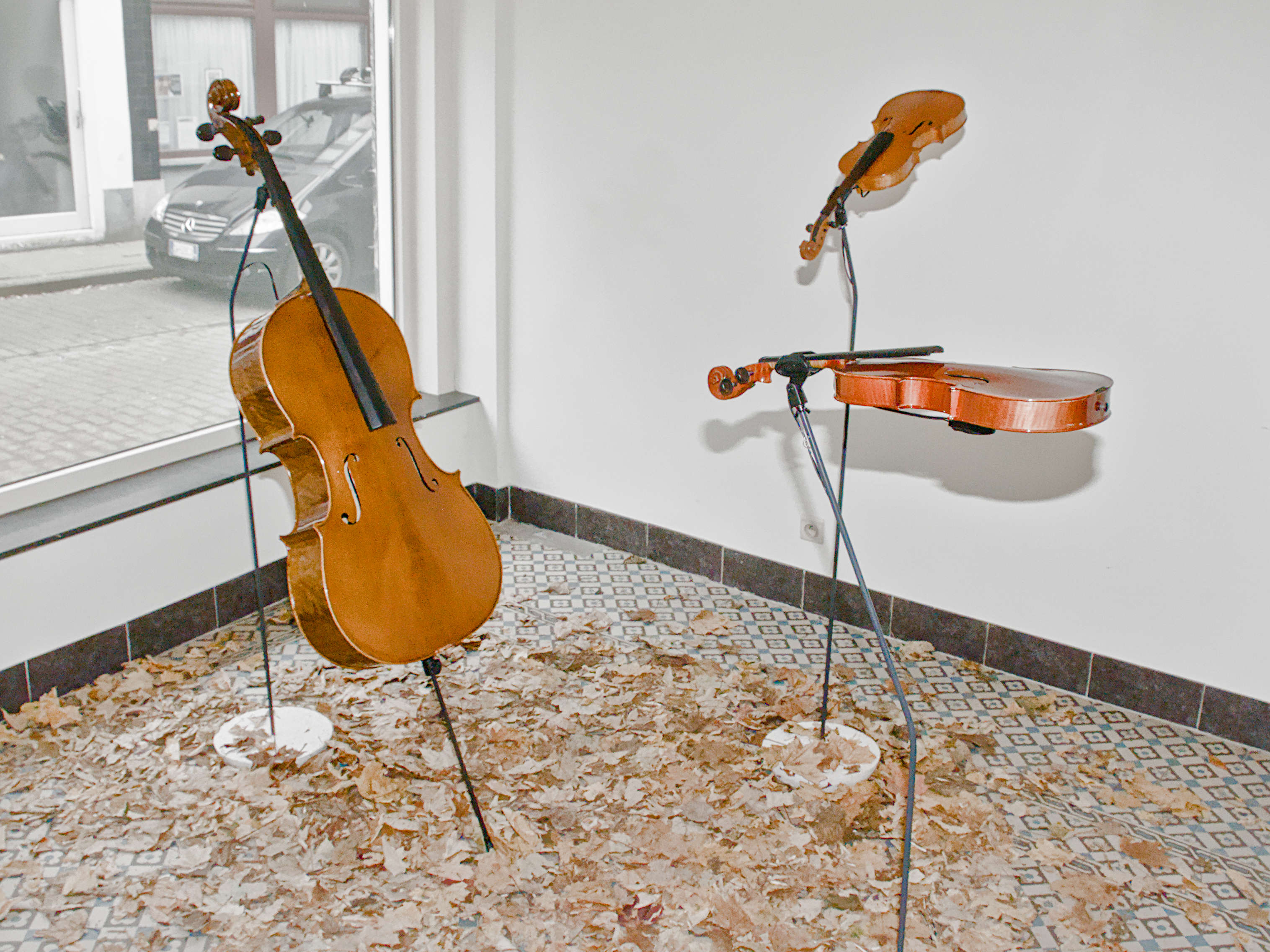
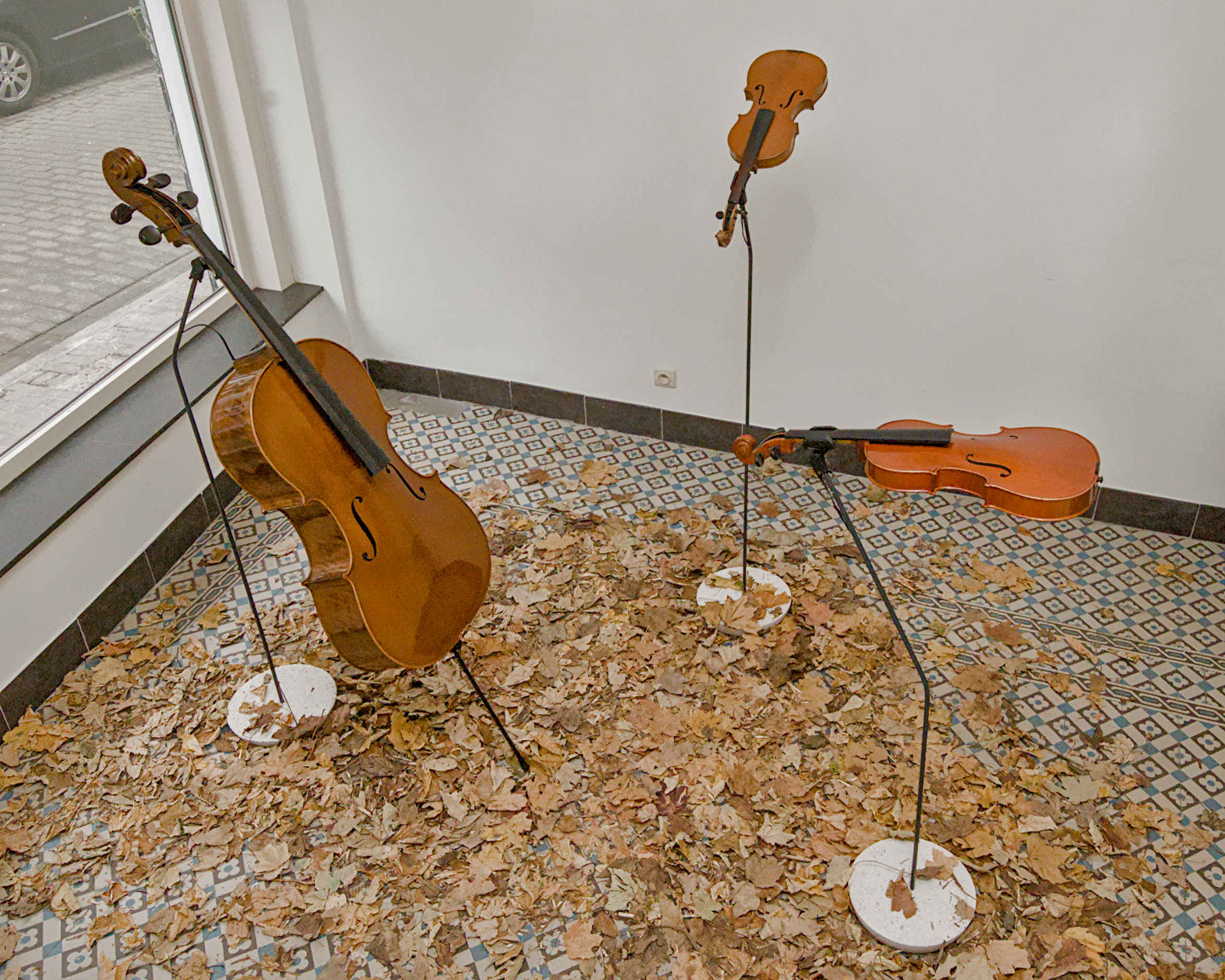
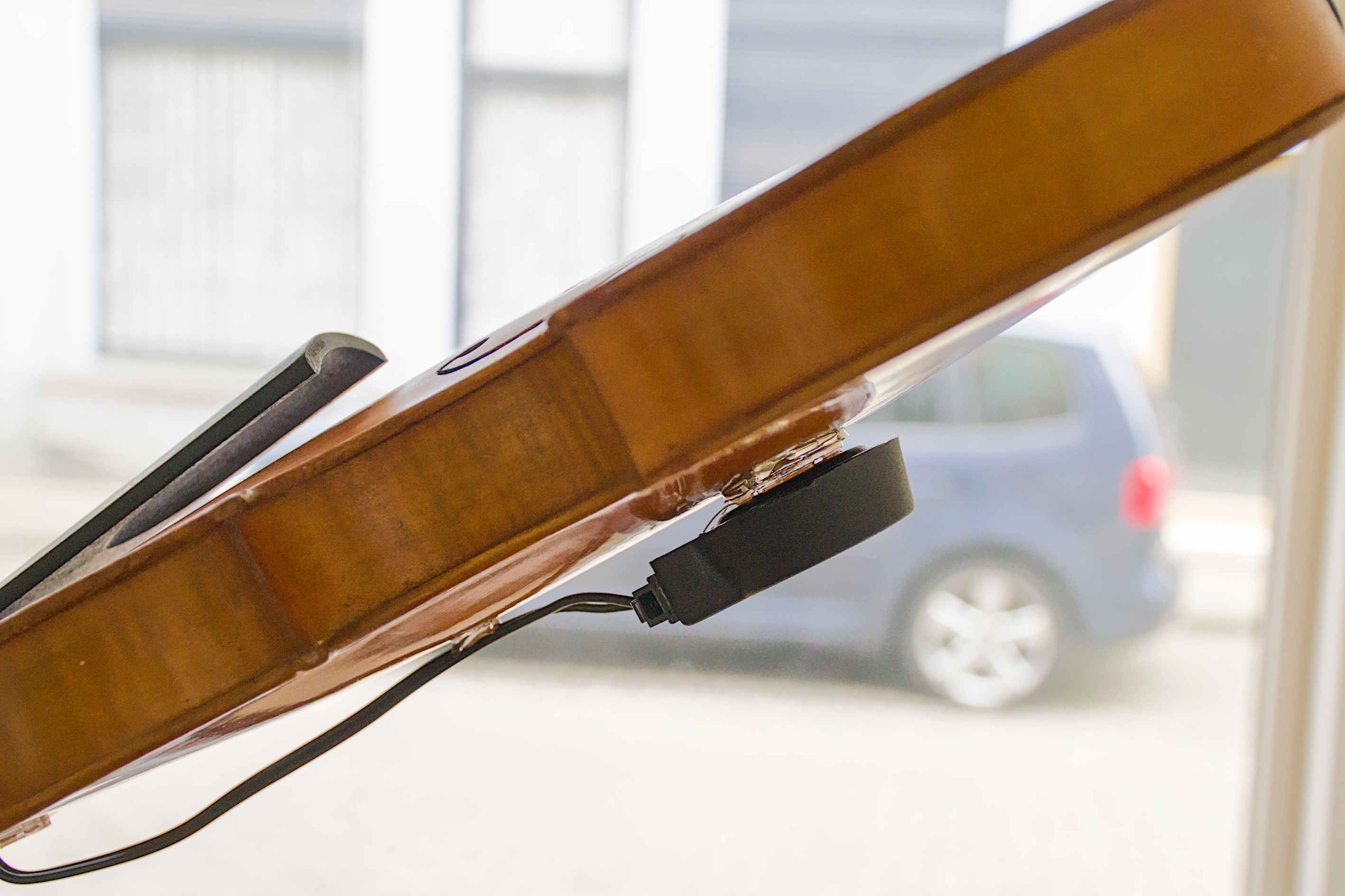

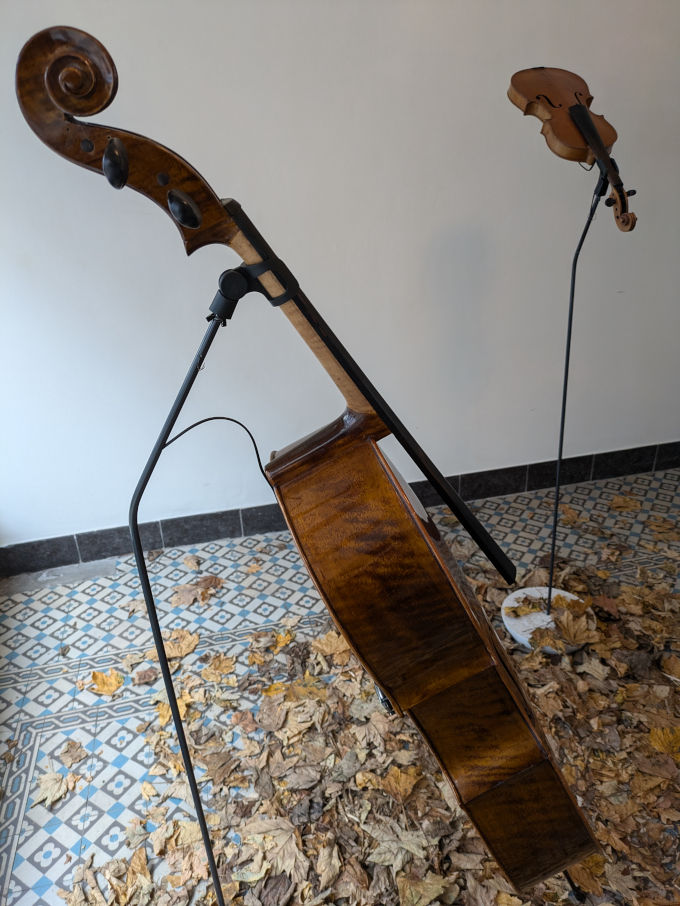
The closer you get to the instruments, the more details of a branch or (microphone) spot in the tree you hear. In this video you see Hans illustrating this with a microphone moving through the installation (so the soundtrack to the video is that of the microphone in the video):
Some photos with visitors during a try-out at Le Trisseur (Ghent):
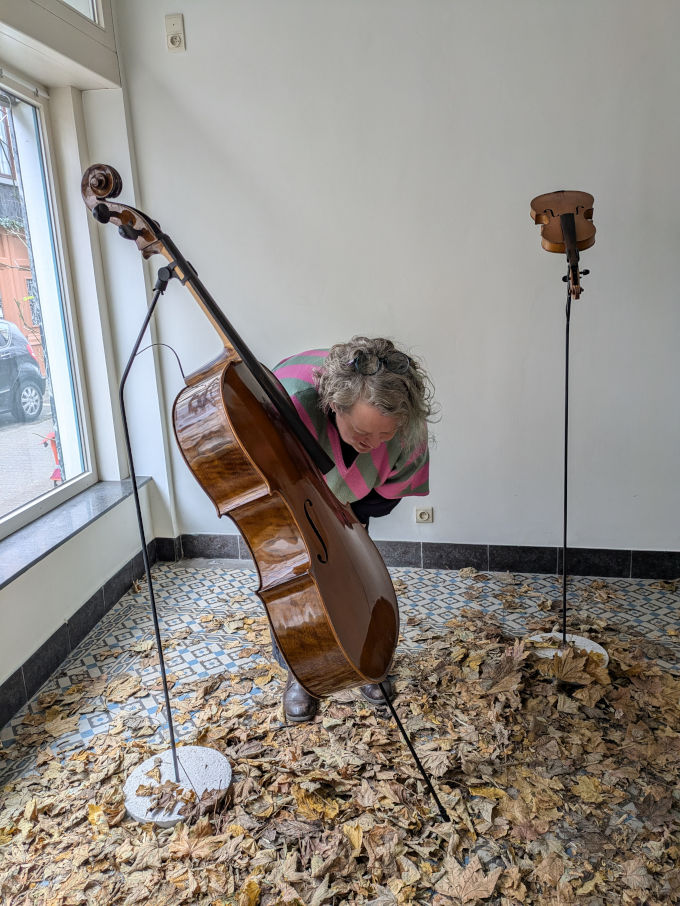
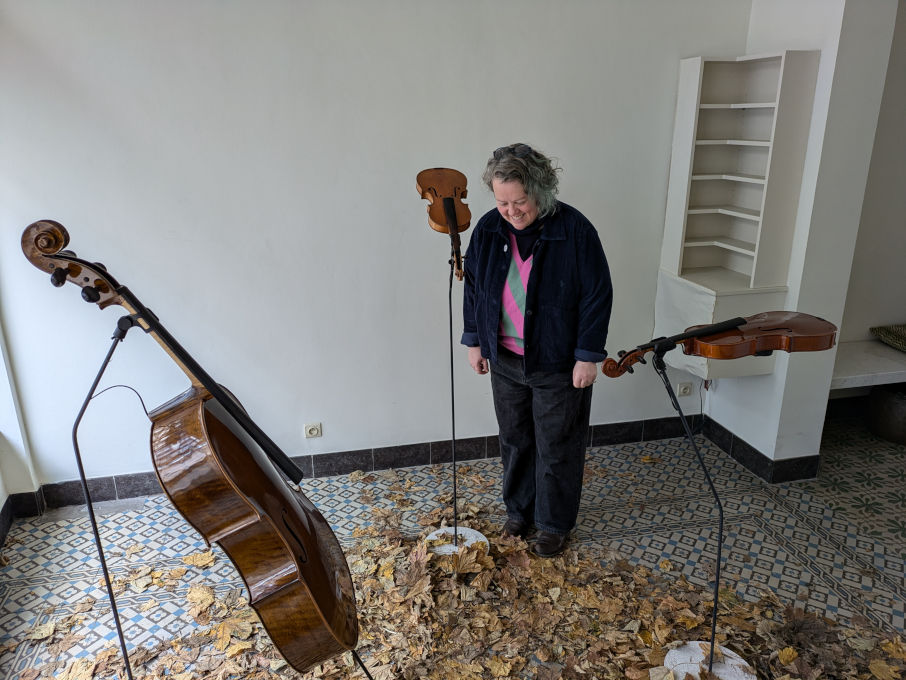
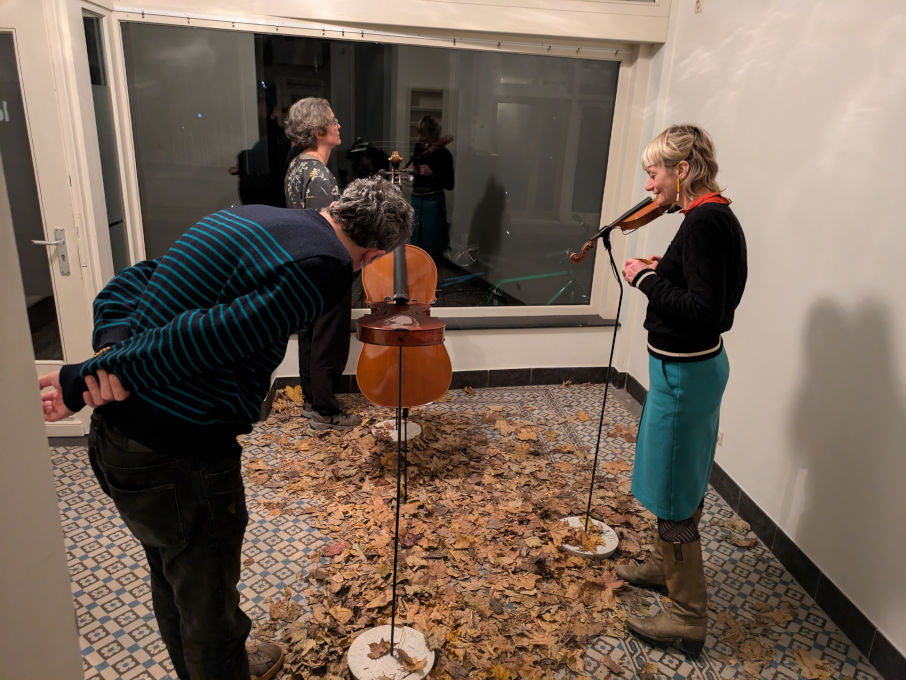
Here are 3 audio fragments to illustrate the multitrack recordings (respectively of a poplar, elder and again poplar). These are stereo edits that only give an approximation of the sound (because the sound boards of the string instruments change the sound and moreover, there are three audio tracks, not two as in stereo).
A photo of elder trees (in the Gentbrugse meersen) followed by a photo of the microphone placement in these trees:
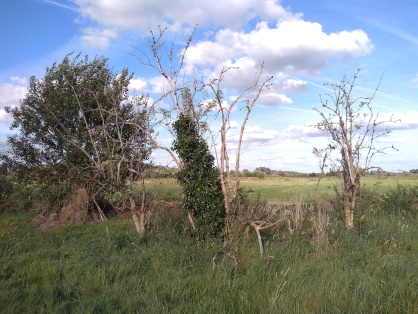
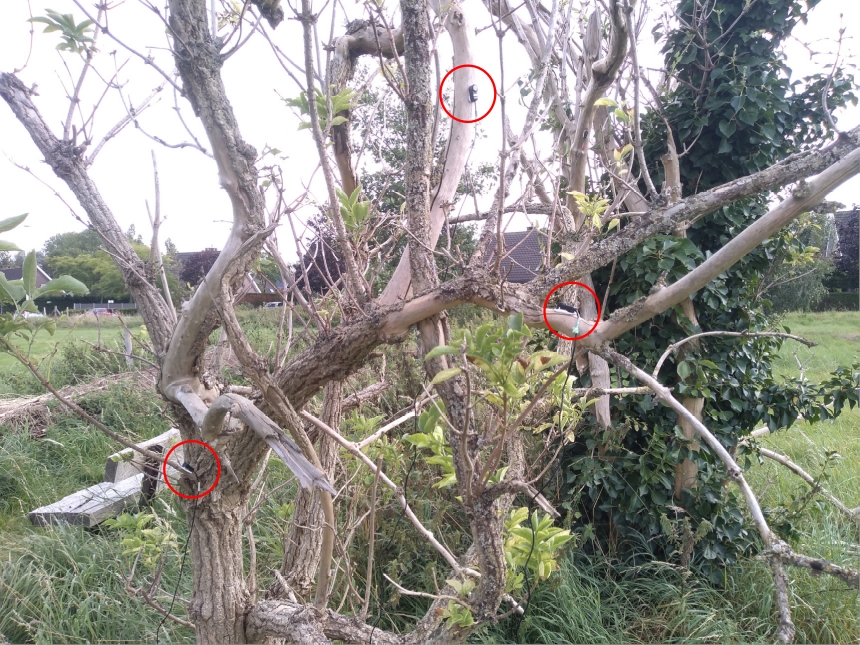
Practical
A space of minimum 4m X 4m is required for the sound installation. The space has a plug for the regular electrical supply (220V).
The space around the installation is fairly quiet and (almost) empty to do justice to the installation.
The sound installation consists of:
-
• Three string instruments and 3 stands (at the back of each instrument an exciter speaker or transducer is attached).
-
• A laptop, sound card and 2 small stereo amplifiers, 5 to 10m away from the instruments and embedded in a case.
-
• Organic ground material. This forms a ground plane between and around the instruments and a path leading to/from the rig. The ground material also covers the 3 cables going to the stereo amplifiers.
Maintenance during an exposition:
-
• Occasionally sweep the ground material together again, possibly replace it.
-
• If the installation is set up for several days, it is best to turn laptop and amplifiers off at night and on again in the morning. There is software on the laptop that plays 3 audio tracks/channels and sends them to the 3 hardware outputs of the sound card.
The proposed arrangement (for multi-day expos) is roughly: the organizer takes care of monitoring, on-site supervision and maintenance as described above. Hans builds the installation on site, adjusts it to the acoustics in the exhibition space, dismantles the installation at the end, provides a manual (for guidance by the organizer) and takes care of repairs during the duration of the exhibition.
Site-specific version
Multitrack recordings (of poplar and elder) were made and edited by Hans Roels to be used 'ready-made' for the Driewoud installation.
In consultation with the organizer, a more site-specific version can be made and shown by making and processing recordings of a local tree or shrub. Suppose there is a striking, beautiful, historical, iconic tree that the organizer would like to include in the installation, it can be discussed how this will be realized.
A workshop can also be set up around this event and the recordings.
Practical – site-specific
To create a more location-specific version of Threewood including recordings of a local tree best keep in mind that:
-
• It should be possible to climb the tree and reach different parts (branches).
-
• The tree should be safe to climb or reach.
-
• Regarding location, the tree should be (more or less) open "in the wind," i.e. not enclosed and completely surrounded by buildings or other trees.
-
• To make recordings, sufficient wind is needed, not too little (windless), not too much (uncontrollable sound, unsafe situation); 3 or 4 Beaufort proved to be a good during past recordings.
-
• The weather should be dry (for the equipment).
So the timing (to make recordings) is somewhat unpredictable. Hans estimates that about 1 month extra preparation time is needed (leading up to the expo, compared to using the "ready-made" recordings). Within this period, 1 or more recording days can then be found followed by the audio editing (post-production).
---
Many thanks to: Luc Denys, Le Trisseur (Mario Stael), Stefaan Smagghe, Kristof Lauwers, Katrijn Baeten.
---